Identification of O-glycosylation related genes and subtypes in ulcerative colitis based on machine learning
- PMID: 39739658
- PMCID: PMC11687659
- DOI: 10.1371/journal.pone.0311495
Identification of O-glycosylation related genes and subtypes in ulcerative colitis based on machine learning
Abstract
Ulcerative colitis (UC) is an immune-related inflammatory bowel disease, with its underlying mechanisms being a central area of clinical research. O-GlcNAcylation plays a critical role in regulating immunity progression and the occurrence of inflammatory diseases and tumors. Yet, the mechanism of O-GlcNAc-associated colitis remains to be elucidated. To this end, the transcriptional and clinical data of GSE75214 and GSE92415 from the GEO database was hereby examined, and genes MUC1, ADAMTS1, GXYLT2, and SEMA5A were found to be significantly related to O-GlcNAcylation using machine learning methods. Based on the four hub genes, two UC subtypes were built. Notably, subtype B might be prone to developing colitis-associated colorectal cancer (CAC). This study delved into the role of intestinal glycosylation changes, especially the O-GlcNAcylation, and forged a foundation for further research on the occurrence and development of UC. Overall, understanding the role of O-GlcNAcylation in UC could have significant implications for diagnosis and treatment, offering valuable insights into the disease's progression.
Copyright: © 2024 Lu et al. This is an open access article distributed under the terms of the Creative Commons Attribution License, which permits unrestricted use, distribution, and reproduction in any medium, provided the original author and source are credited.
Conflict of interest statement
The authors have declared that no competing interests exist.
Figures
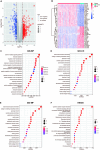

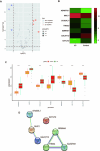
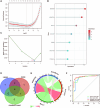
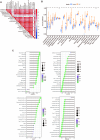
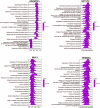

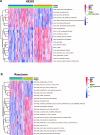
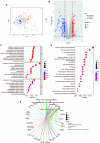

Similar articles
-
Identification of cuproptosis-associated subtypes and signature genes for diagnosis and risk prediction of Ulcerative colitis based on machine learning.Front Immunol. 2023 Apr 5;14:1142215. doi: 10.3389/fimmu.2023.1142215. eCollection 2023. Front Immunol. 2023. PMID: 37090740 Free PMC article.
-
Identification of Diagnosis and Typological Characteristics Associated with Ferroptosis for Ulcerative Colitis via Bioinformatics and Machine Learning.Endocr Metab Immune Disord Drug Targets. 2024;24(8):946-957. doi: 10.2174/0118715303263609231101074056. Endocr Metab Immune Disord Drug Targets. 2024. PMID: 37957905
-
Identification of subclusters and prognostic genes based on GLS-associated molecular signature in ulcerative colitis.Sci Rep. 2024 Jun 7;14(1):13102. doi: 10.1038/s41598-024-63891-2. Sci Rep. 2024. PMID: 38849409 Free PMC article.
-
Chronic ulcerative colitis and colorectal cancer.Cancer Lett. 2014 Apr 10;345(2):235-41. doi: 10.1016/j.canlet.2013.07.032. Epub 2013 Aug 11. Cancer Lett. 2014. PMID: 23941831 Review.
-
Microbiota-Immune Interactions in Ulcerative Colitis and Colitis Associated Cancer and Emerging Microbiota-Based Therapies.Int J Mol Sci. 2021 Oct 21;22(21):11365. doi: 10.3390/ijms222111365. Int J Mol Sci. 2021. PMID: 34768795 Free PMC article. Review.
References
-
- Zhang S. Z., Zhao X. H. & Zhang D. C. Cellular and molecular immunopathogenesis of ulcerative colitis. Cell Mol Immunol 3, 35–40 (2006). - PubMed
MeSH terms
LinkOut - more resources
Full Text Sources
Medical
Research Materials
Miscellaneous

